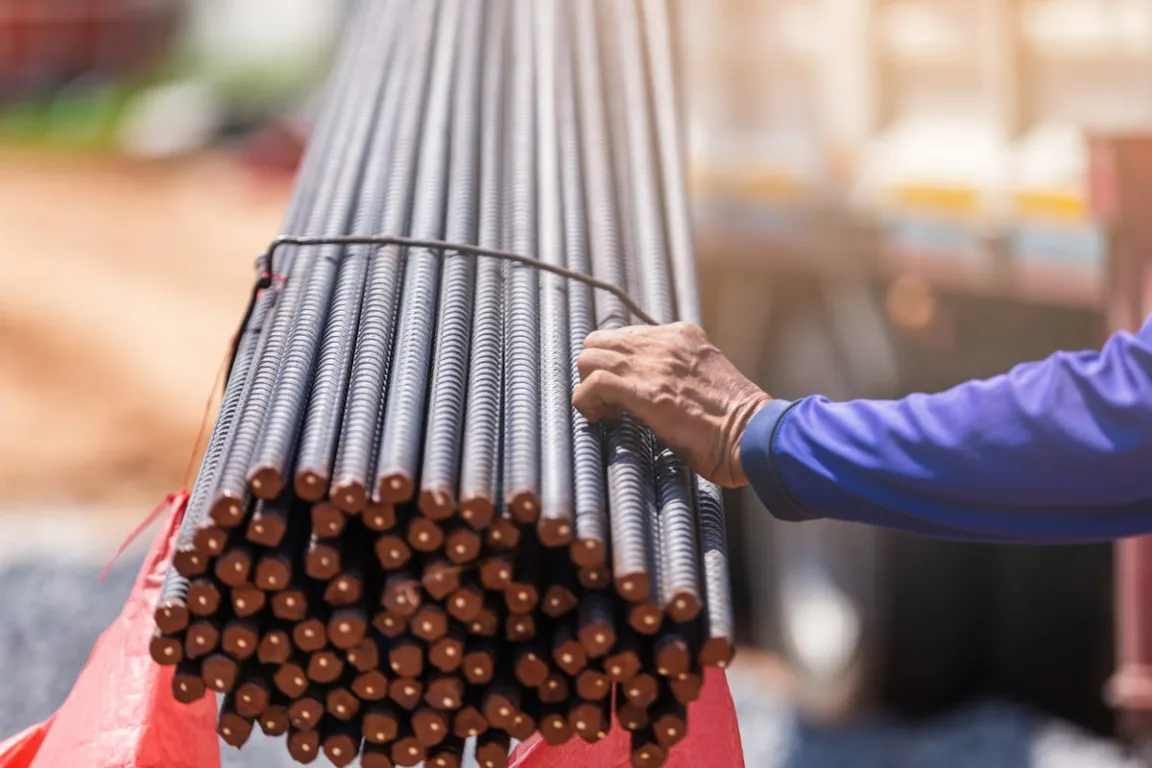In the construction field, there are many important materials that need to be used so that the resulting building can stand firmly, safely, and durably. Well, one of the building structures that should not be left behind is rebar.
Rebar stands for reinforced bar, which is a concrete reinforcing iron that is one of the most important parts in the construction of reinforced concrete structures.
Check out the article below to get to know more about rebar, its types, benefits, and how to install it.
What Is Rebar?
Rebar, or reinforced rebar, is a steel bar that is used to form structured concrete. Rebar is also widely used as a pressing tool in reinforced concrete to strengthen reinforced stone structures and helps to reinforce concrete when it is under pressure.
Rebar is made of hardened steel and has various shapes and sizes. In general, rebar is used to build strong buildings that are supported by attractive forces and have the strength to withstand compressive forces.
Types of Rebar
In Indonesia, rebar is divided into several types based on its use, namely plain bar, deformed bar, and particular concrete rebar. Here is the full explanation of the types of rebar:
1. Plain Bar
Plain bar is the most widely used rebar. As its name suggests, this rebar has a flat or plain shape without any protrusions on the surface of the iron. Plain bar has a flexible shape so that this type of rebar is easy to install. Plain rebar functioned as a binder for several threaded iron concretes in the building.
2. Deformed Bar
The next type of rebar is a deformed bar. This rebar has protrusions or scratches on its surface that function to increase grip and durability in concrete.
Unlike a plain bar, a deformed bar has a hard shape that makes it more difficult to uninstall. However, this type of rebar is more attractive for construction projects that require high bearing capacity, such as high-rise buildings, bridges, and others.
3. Particular Concrete Rebar
This kind of rebar is only used for particular projects, for instance, epoxy-coated concrete rebar used in construction projects that require high resistance to corrosion. In addition, there are also concrete rebar coated with anti-fire and anti-earthquake materials.
Read also: What Is Concrete Grouting in Construction and the Procedures
Benefits of Rebar in Building Construction
Rebar has an important role in keeping the building structure strong. Therefore, the use of rebar is very important in construction projects. These are the benefits of rebar in building construction:
1. Increasing the Durability of the Structure
The first benefit of rebar is to increase the durability of the structure. Rebar is used as reinforcement in concrete so that it helps increase the strength of the structure. When the concrete supports a large enough load, the rebar will withstand the load and prevent the concrete structure from collapsing.
2. Minimizing Maintenance Costs
In long-term use, rebar is more reliable because this material has a fairly high durability. Rebar is also very durable and requires minimal maintenance, therefore, the use of concrete rebar will help minimize maintenance costs.
3. Maximizing Safety
Because of its high durability, projects that require maximum safety are highly recommended to use this material. It is also in accordance with predetermined standards and specifications to reduce the risk of structural failure.
4. Supporting Earthquake-Resistant Building
Because rebar has a fairly high resistance, this material has an important role too when it comes to maintaining the structure of the building during natural disasters such as earthquakes.
In construction projects, the installation of rebar must be done carefully so that it can support the building strongly during an earthquake.
Rebar Installation Steps
The steps in installing rebar in a building structure must be followed carefully because rebar is the key to the strength of the building structure.
Here are the right installation steps so that the rebar can support your construction optimally:
1. Planning the Design of the Structure
The most important step before installing rebar is to make a design installation plan for the structure. The design that will be used must be planned properly so that the load received by the rebar is in accordance with its strength.
In this planning, it must also be determined what type or rebar will be used and what kind of installation process will be applied.
2. Cutting Reinforcing Iron
After the plan is set, the next step is cutting. Cutting reinforcing iron must be in accordance with the required shape and size. This cutting process can be done using special tools that are suitable for the type of rebar material.
3. Rebar Body Cleaning
After cutting, you need to clean the rebar to remove dirt and rust so that it does not interfere with and reduce the function of the rebar. Once the rebar is clean, it is ready to be installed in the building structure.
4. Clamping the Rebar
Next, you can start to install the rebar in the concrete structure by clamping the rebar using rebar clips. This is useful for maintaining the stability of the building structure that will be obtained from the rebar.
5. Splicing Reinforcing Iron
This splicing uses a special tool called a coupler and uses an overlap method. This splicing serves to connect iron that is too short. It should be noted that this splicing process must be carried out carefully and under the supervision of a construction expert.
6. Watering the Rebar
After the concrete rebar is arranged according to the planned design, the next step is to water the concrete structure.
At this step, the concrete will be mixed with the appropriate proportions and then leveled on the concrete structure. Once this step is complete, you need to wait for the concrete to harden. Generally, the hardening process depends on the type of concrete and the surrounding environmental conditions.
Read also: Concrete Curing: Definition, Function, and How to Do It
That is all the explanation of what rebar is, its types, benefits, and how to install it. Besides it needs to be installed properly, rebar must also be protected with strong concrete to prevent corrosion and make it more sturdy.
If you are confused about which concrete product to use, Merah Putih Beton Precast can be the ideal solution.
Beton Precast has a production process that is supported by high-quality standards and materials. This means that every Merah Putih Beton Precast product meets strict requirements in physical characteristics and strength.
Besides Beton Precast, there is also Beton Ready Mix, which can be an efficient and effective choice for construction. Beton Ready Mix is a concrete mixture that has been produced in a batching plant with the proportion of ingredients according to the project construction specifications.
Contact us now for more detailed information about other products and services available at Semen Merah Putih!
Read also: What Is Concrete Grouting in Construction and the Procedures



